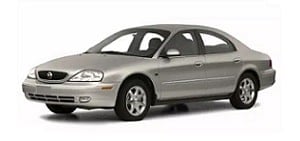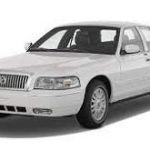Mercury Sable Owner's Manual
You can find 13 different owner's manuals for the Mercury Sable on this page that are in the PDF format.
Yearly Sable Owner's Manuals
The years available stretch from 1996 through to 2009 and to view the manual you just click the name underneath.

- Manufacturer: Mercury
About The Sable
Mercury created the Sable in 1986 following a huge $3.5 billion investment from Ford and went on sale, replacing the Mercury Marquis (to put this into context, the popular Ford Fiesta only received a little under $900 million for its development).
Quickly gaining popularity, the sales figures soared but dropped off when a number of issues became evident, leading to Mercury changing the vehicle fully.
The station wagon variant could fit 81.1 cubic feet worth of cargo when the back seats were folded flat, and by 1996, the third generation Sable hit American dealerships. Fully redesigned using the DN101 platform, these new Sables had a longer wheelbase and a cheaper trim level moving the ‘GS’ to a mid-grade with the ‘G’ taking its place as the entry-level Sable (and was only available on the wagon variant).
The fourth generation sold from 2000 up until 2005 and moved in the opposite direction to its former styles in an attempt to look more modern. When in the early 1990s Mercury rounded the edges, now they were more angular, and a contrasting mix of the two where possible. Mercury raised the roof height, and added an inbuilt CD player and automatic power moon roof along with side airbags and a badge placement shift.
From 2008, reports were filed regarding a serious fault plaguing the windscreen wipers, leading to yet another recall. The fluid lines would clog, and dump antifreeze into the crankcase which ultimately mixed with the engine oil ruining the head gaskets and rod bearings. A class action lawsuit demanded that Mercury would either offer affected customers a new engine or a replacement vehicle; coupled with poor sales, Mercury ended production of the Sable in 2005, the final Sable rolled off the production line on April 29th of that year.
This shortlived final generation was built on the same platform as the Ford Flex, Ford Taurus and Volvo XC90.









